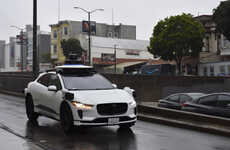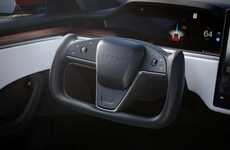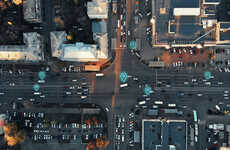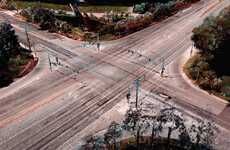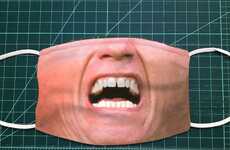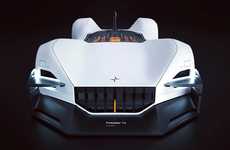
An MIT System Cam Help Autonomous Cars in Poor Weather Conditions
Daniel Johnson — February 24, 2020 — Autos
References: csail.mit.edu & engadget
MIT researchers from the Computer Science and Artificial Intelligence Lab, or CSAIL, were able to develop technology that can help autonomous vehicles navigate through adverse weather conditions.
Where most autonomous vehicles navigate using a combination of LIDAR sensors or cameras, this system is able to allow the vehicle to 'see' through detailing what is under a road using a Ground Penetrating Radar, or GPR. GPR functions through sending out an electromagnetic pulse into the ground, this signal can determine the makeup of the ground under a road. Data about the ground underneath the road is then used in a map for the vehicle.
Teddy Ort, a Ph.D. student at CSAIL spoke about the project, "But LGPR can quantify the specific elements there and compare that to the map it's already created, so that it knows exactly where it is, without needing cameras or lasers."
Image Credit: MIT CSAIL
Where most autonomous vehicles navigate using a combination of LIDAR sensors or cameras, this system is able to allow the vehicle to 'see' through detailing what is under a road using a Ground Penetrating Radar, or GPR. GPR functions through sending out an electromagnetic pulse into the ground, this signal can determine the makeup of the ground under a road. Data about the ground underneath the road is then used in a map for the vehicle.
Teddy Ort, a Ph.D. student at CSAIL spoke about the project, "But LGPR can quantify the specific elements there and compare that to the map it's already created, so that it knows exactly where it is, without needing cameras or lasers."
Image Credit: MIT CSAIL
Trend Themes
1. Autonomous Navigation in Adverse Weather - MIT's GPR technology allows autonomous vehicles to navigate through poor weather conditions without cameras or lasers.
2. Ground Penetrating Radar for Autonomous Navigation - GPR is a disruptive innovation for autonomous navigation that can map the ground underneath the road.
3. Technology for Precise Location Mapping - GPR technology can be used for precise mapping of location, creating new possibilities for location-based industries.
Industry Implications
1. Autonomous Vehicles - MIT's GPR technology is a game-changer for the autonomous vehicle industry, especially in areas with adverse weather conditions.
2. Construction and Engineering - GPR technology can revolutionize construction and engineering industries, by providing precise mapping capabilities for underground structures.
3. GPS and Mapping - GPR technology can disrupt GPS and mapping industries, by offering precise location mapping capabilities.
1.2
Score
Popularity
Activity
Freshness


